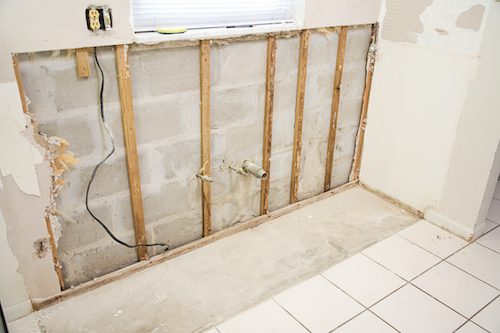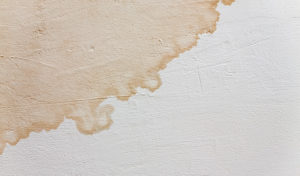Locating Stains from Water on Walls - Guidelines to Assess and Repair Them
Locating Stains from Water on Walls - Guidelines to Assess and Repair Them
Blog Article
Are you in search of critical info on How to Remove Water Stains from Walls and Ceilings?

Water stains on wall surfaces are not pleasurable to the eyes. Sometimes it appears nearly unpreventable to experience water spots on wall surfaces in residences.
House owners living in humid areas continuously deal with the fear of water spots on wall surfaces. With well-shaped and precise info on the causes of water spots and also timely fixing processes, you will always be an action in advance of such occurrences.
3 Typical Reasons For Water Discolorations on Walls
As opposed to common belief, water discolorations on walls do not always come from poor building products. There are numerous causes of water stains on walls. These include:
Moist
When warm wet air meets completely dry cool air, it causes water droplets to base on the wall surfaces of structures. This occurs in bathrooms and kitchens when there is steam from food preparation or showers. The water droplets can stain the bordering walls in these parts of your house and infect other areas.
Wet or condensation impacts the roof and also walls of structures. This triggers them to show up darker than other locations of the house. When the wall surface is wet, it produces a suitable atmosphere for the development of microorganisms and fungi. These may have negative effects on health, such as allergic reactions as well as respiratory disorders.
Poor Water drainage
This will certainly avoid water from seeping into the walls. This web links to extreme moisture that you see on the wall surfaces of your structure.
So, the leading cause of wet walls, in this case, can be a poor drainage system. It can likewise result from bad administration of sewage pipes that run through the building.
Pipeline Leaks
The majority of residences have a network of water pipelines within the walls. It always increases the viability of such pipelines, as there is little oxygen within the walls.
A drawback to this is that water leak affects the wall surfaces of the structure and triggers prevalent damage. An indicator of faulty pipes is the appearance of a water discolor on the wall surface.
Pro Pointer
A houseplant in your home also enhances its humidity. So, if the house is already humid, you may want to present houseplants with marginal transpiration. An instance of suitable houseplants is succulents.
Water Spots on Wall Surface: Repair Service Tips
Home owners would typically desire a quick fix when dealing with water discolorations. Yet, they would certainly quickly understand this is disadvantageous as the water spots recur. Below are a few practical suggestions that will certainly lead you in the repair of water spots on walls:
Verdict
Although no person wants to have water discolorations on walls in their residence, it can happen to the best people. This short article offers you take advantage of, as you now understand exactly how to manage this problem if it does happen.
It is always best to hire specialist services to help take care of the problems in your house.
Sometimes it seems practically unpreventable to experience water discolorations on wall surfaces in residences.
In contrast to preferred idea, water stains on walls do not always stem from bad building materials. There are several causes of water discolorations on wall surfaces. The water droplets can discolor the surrounding wall surfaces in these components of your house and spread to various other locations.
Right here are a few useful tips that will certainly assist you in the repair work of water spots on walls:
CHECKING FOR WATER DAMAGE
Water damage can be costly, and it may begin before you even notice the first signs of trouble. Water damage can cause mold and mildew in your walls and floors, which can create an abundance of health concerns for your family. It can also lead to costly repairs of various appliances and general home fixtures. To avoid the pricey consequences of water damage, here are Warner Service’s top 5 places you should check:
The walls – The easiest place to spot the beginnings of water damage is on the walls and ceilings of your home. If water damage is present, there will most likely be water stains, especially around the windows and doorframes, and/or cracks in the drywall. If a stain looks unusual (discolored to brown, black or gray, raised texture), has a swollen appearance or is soft to the touch, contact a professional immediately. The pipes – To avoid water damage, consistently check the pipes in your kitchen (especially the dishwasher and ice maker), bathrooms, laundry room (specifically washing machines) and basement for corrosion, leaks and water stains. Pay special attention to where the pipes connect in your home and the location of caulking around the bathroom fixtures, including toilets, sinks, showers and tubs. Missing or loose caulking and grout could be signs of leaking water. This seepage can also quickly cause mold and rust, so double check your water heater and tank for wet spots on the floor. The floor – Water damage is very easy to spot on the floor. Look for any warping or buckling of the material, especially in the basement. If your home has wood flooring, look for bright white or dark stains. If your home has carpeting, keep it dry and clean. A damp carpet that smells of mold could cause water damage and health problems. To avoid this, consider installing floor pans under your appliances to help prevent damages from small, slow and undetected leaks. The basement and attic – If your basement or attic smells odd check for mold and mildew around the area, especially the valley where the roof meets. While you are inspecting those areas, check for wall cracks, floor stains, rust and dampness in the insulation. If you live in a colder and/or rainier climate, perform routine checks for water damage from melting snow or ice and rain. The exterior – Check the roof for damaged flashing and missing, cracked or curled shingles. There should also be no standing water anywhere outside your home. This could be caused by puddles, leaky rain gutters or hoses, poor drainage, or short gutter spouts. Invest in a sump pump system or water flow monitoring system, and perform routine maintenance on these outdoor appliances to avoid indoor water damage.

Do you really like reading about ? Write feedback directly below. We would be interested to listen to your feelings about this article. We hope that you come back again in the near future. Don't hesitate to take the time to promote this article if you liked it. Thanks for going through it.
Go Deal Now Report this page